Schwerin is a postcard-perfect town in northern Germany that’s ideal for a weekend getaway. Here’s what to do, see, and eat while in Schwerin.
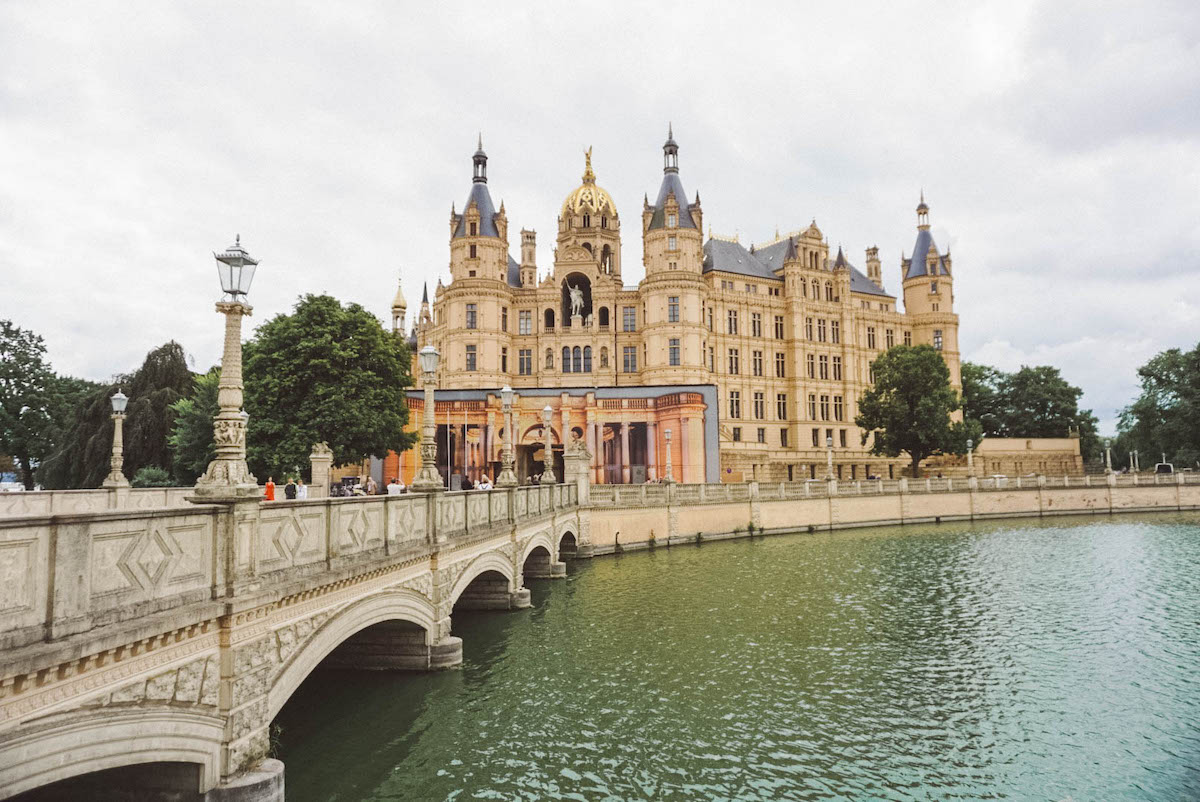
A fairytale castle, a shimmering lake, a bustling Old Town — Schwerin is one of the jewels of northern Germany.
Founded in 1160 by Henry the Lion, Duke of Saxony and Bavaria, Schwerin is the state capital of Mecklenburg-Vorpommern. It’s a small but mighty city with lots to offer in the way of attractions, and its close proximity to Hamburg and Berlin make it the perfect stopover while traveling between the larger cities in the region.
I’ve traveled all over Germany since moving to Berlin in 2019, and Schwerin remains one of my all-time favorite places in the country. This small city continues to fly under the radar of most tourists, so it’s a great place to visit if you’re trying to go slightly off the beaten path in Germany.
Below are the top things to do in Schwerin, Germany. The city is fairly small, and I’ve found it to be ideal for a weekend getaway.
Table of Contents
Click “show” to see the full table of contents for this post. You can jump around the post as desired by clicking on the individual sections listed below.
Top Things to Do in Schwerin, Germany
There’s not that much to do in this beautiful town, but there’s enough going on that you can easily fill an entire weekend with activities. The main places to visit in Schwerin are all within walking distance of the Old Town, and there’s no rush at all to get anywhere.
My advice is to take things at your own pace and fit in activities whenever you’re ready to move onto the next thing. Trust me, you’ll have plenty of time to see the main attractions in Schwerin in a single weekend!
Schwerin Castle (Schloss Schwerin)
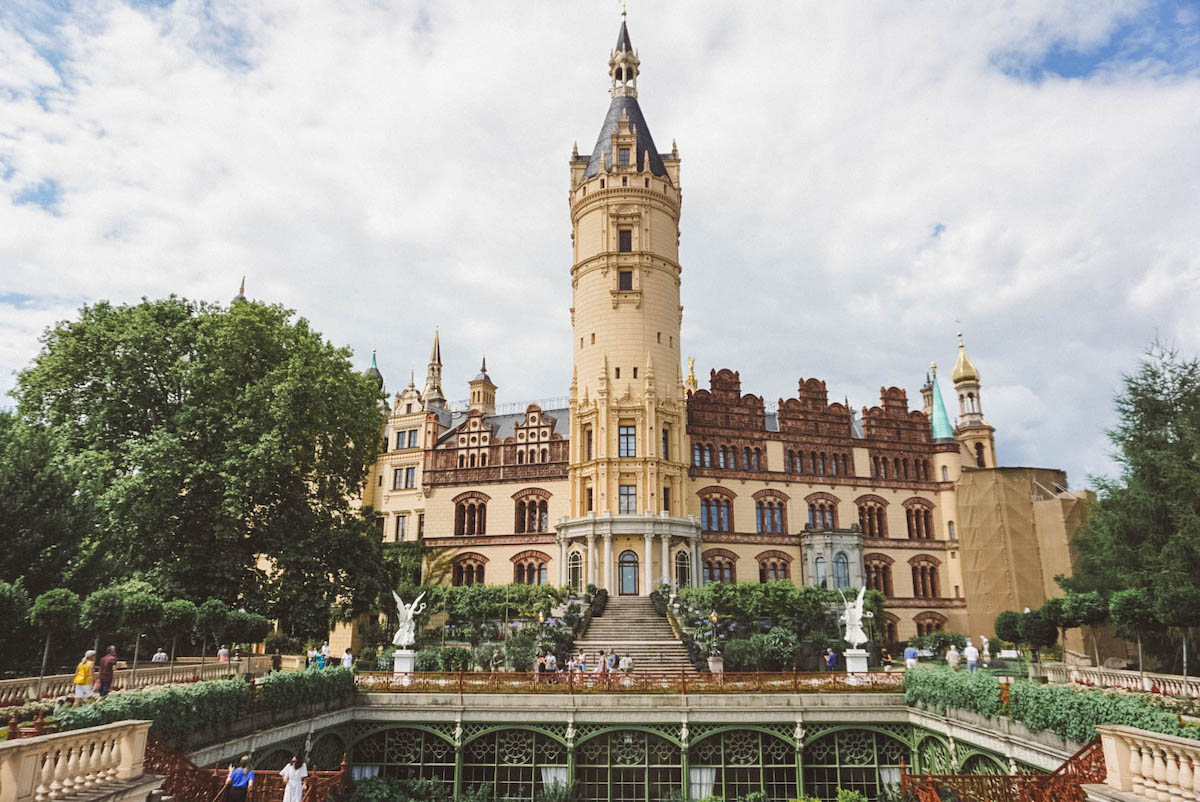
The absolute can’t-miss attraction in Schwerin is the city’s stunning fairytale castle. Although Schwerin Castle looks imposing and historic, it’s actually relatively new, all things considered.
Records show that there’s been a castle along the banks of Lake Schwerin since the 10th century. Since being built, that first structure underwent many expansions and stylistic transformations.
Eventually, the Grand Duke of Mecklenburg, Frederick Franz II, commissioned an entirely new castle to be built in 1843 — that’s the structure you see today, perched on an island within the lake.
The castle was built in the Neo-Renaissance style, and is said to have 365 towers and turrets (one for every day of the year!). Many of the original furnishings have been lost over the years, but the facade and the apartments of the Grand Duke and Grand Duchess remain unchanged.
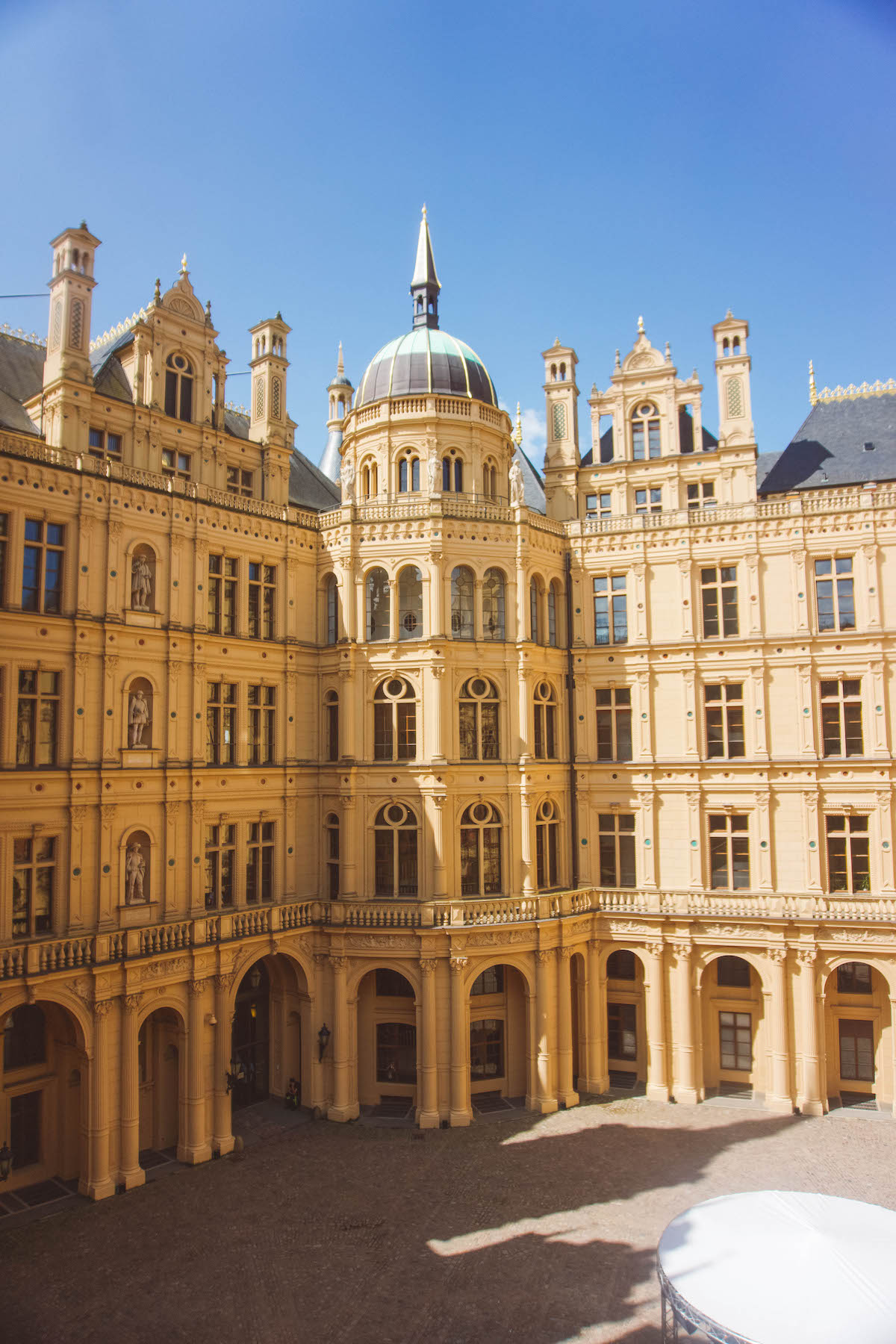
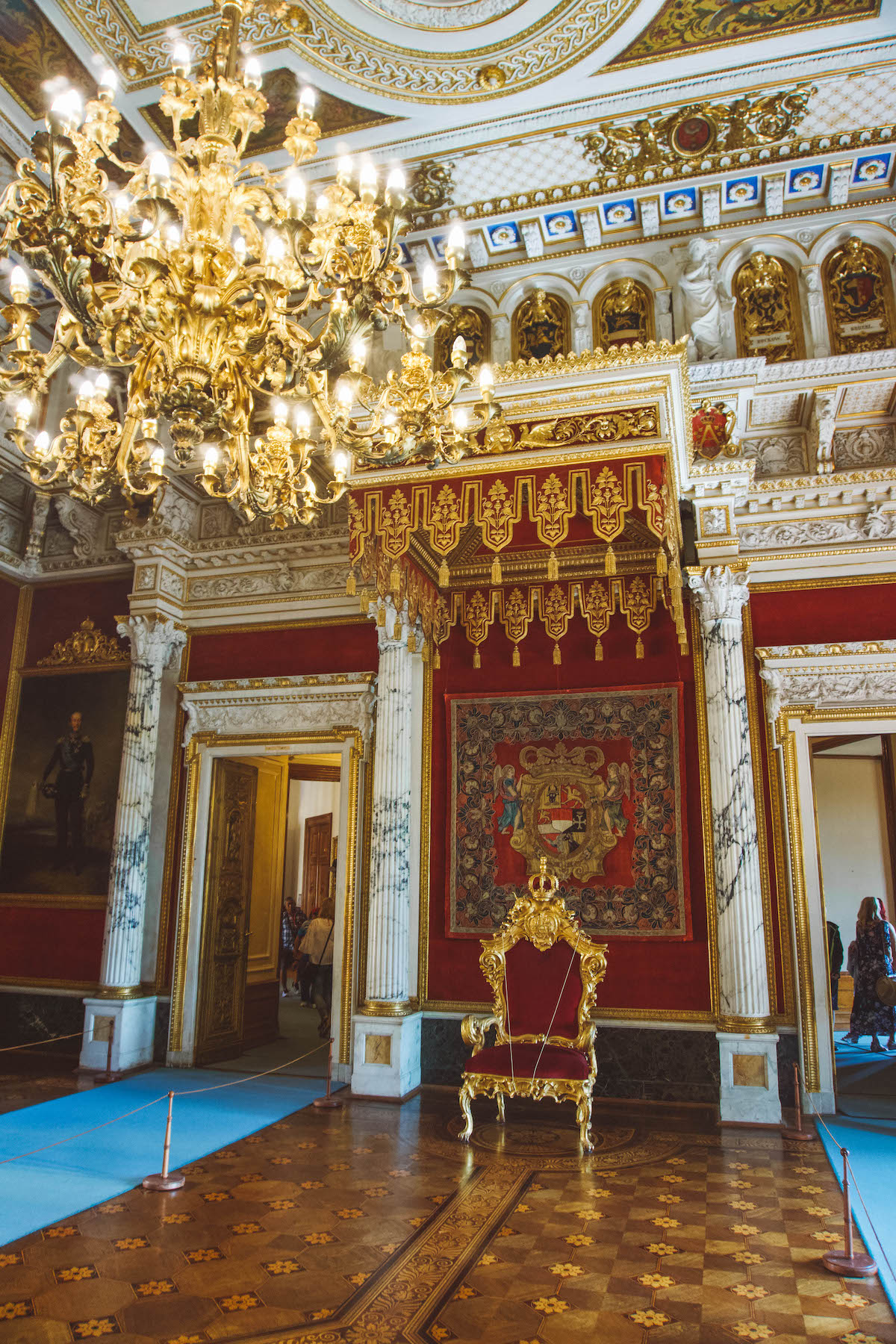
Visitors are able to tour these apartments at their own pace (I highly recommend paying the 2 extra Euros for an audio guide, it covers a lot of information the placards don’t mention).
Most of the rooms you visit have been completely restored, but a few haven’t been redone yet, which I think adds to the overall charm of the place.
In addition to touring the private rooms of the castle, there’s also a small castle museum that showcases the castle’s silver, porcelain, and firearms. There are some stunning objects on display, so definitely take the time to breeze through the museum portion of the castle. You also have access to the castle’s church.
Since 1990, the rest of the castle has housed the parliament of Mecklenburg-Vorpommern.
Tip: Many of the ceilings are decorated with what looks like gold filigree; as it turns out, the royal family cut costs by using gold-painted paper mâché to decorate the ceilings. I saw this as well in nearby Ludwigslust (where the heir of the Duke of Mecklenburg-Schwerin built his hunting lodge-turned-palace), and I suspect the paper mâché in Schwerin Castle might be what’s called Ludwigslust board.
Castle Gardens and Park (Schlossgarten)
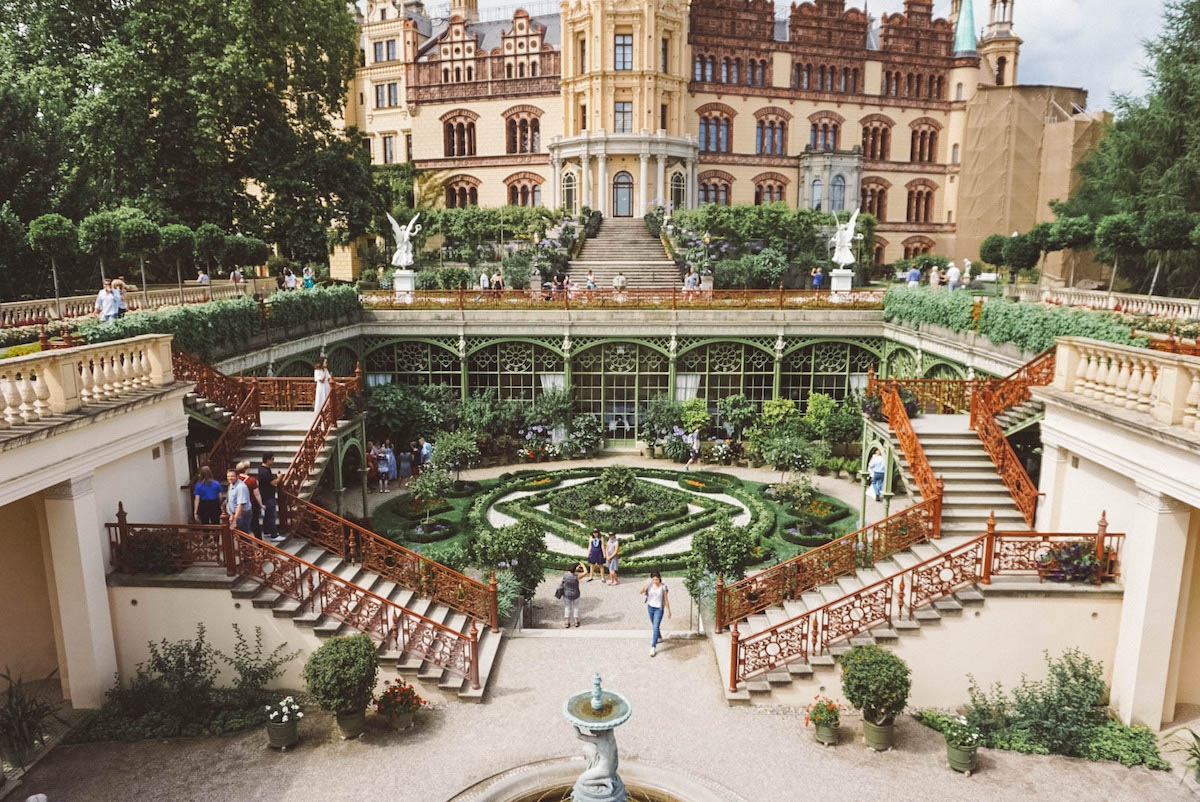
In addition to the castle itself, you absolutely must give yourself time to leisurely stroll through the gardens (they get their own section on this list because they’re free to enter and can be visited without going into the castle itself).
Behind the castle is a formal garden that overlooks the lake; there’s a man made grotto nearby, and a bridge that crosses over the orangery that has the most spectacular view of the boats on the water.
Past the manicured gardens is a larger park space that’s mostly open grass (with a few hedge tunnels thrown in, because why not?). The park stretches 25 hectares and is designed largely in the style of an English garden.
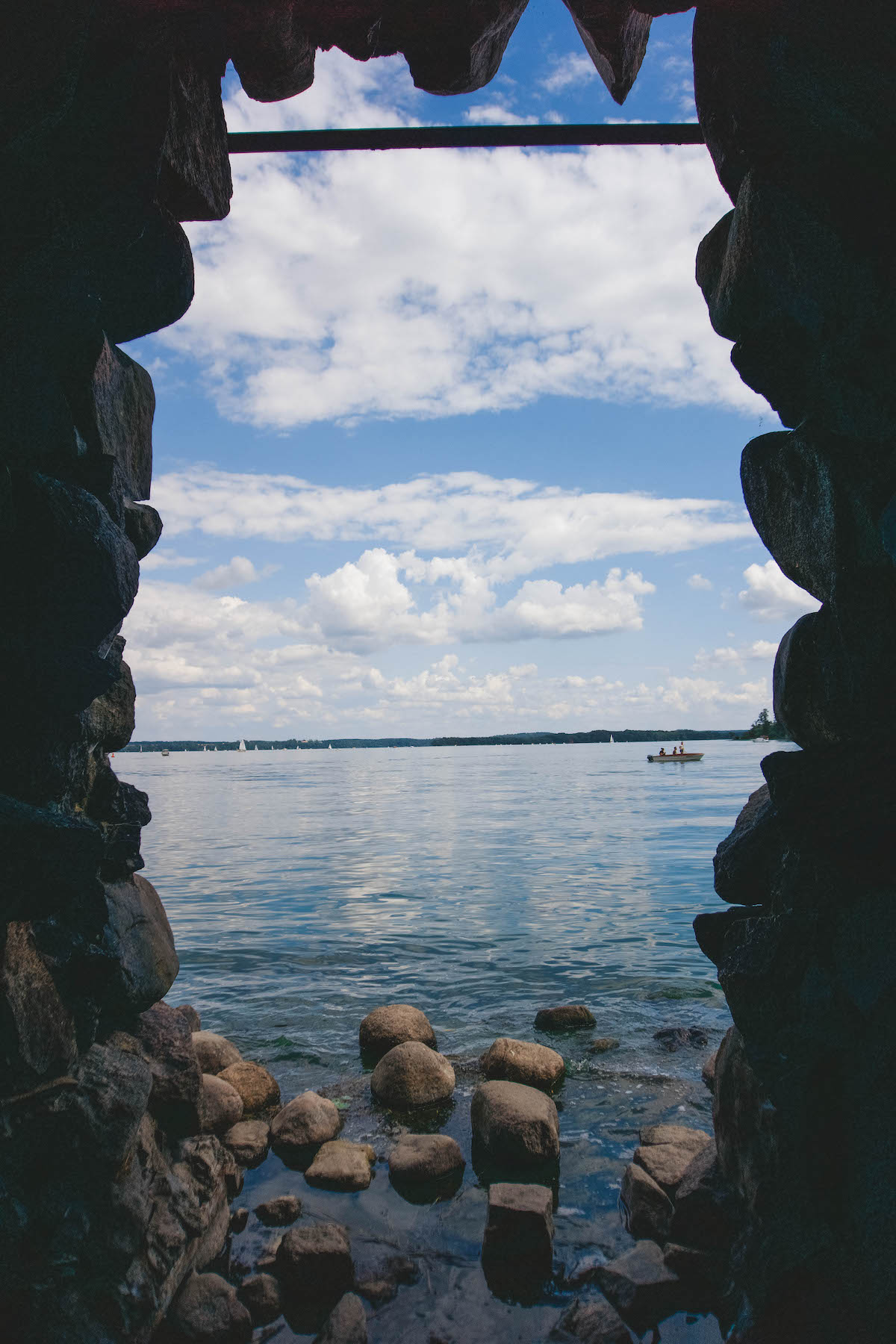
Once you move past the more formal parts of the gardens, it’s easy to find a spot all to yourself and relax.
If you’re traveling alone, bring a book along and plop down somewhere to rest your feet for a bit. Whether you’re overlooking the castle or the lake, the view is unbeatable! The gardens and park remain two of my favorite things to do in Schwerin for this reason.
Old Town (Altstadt)
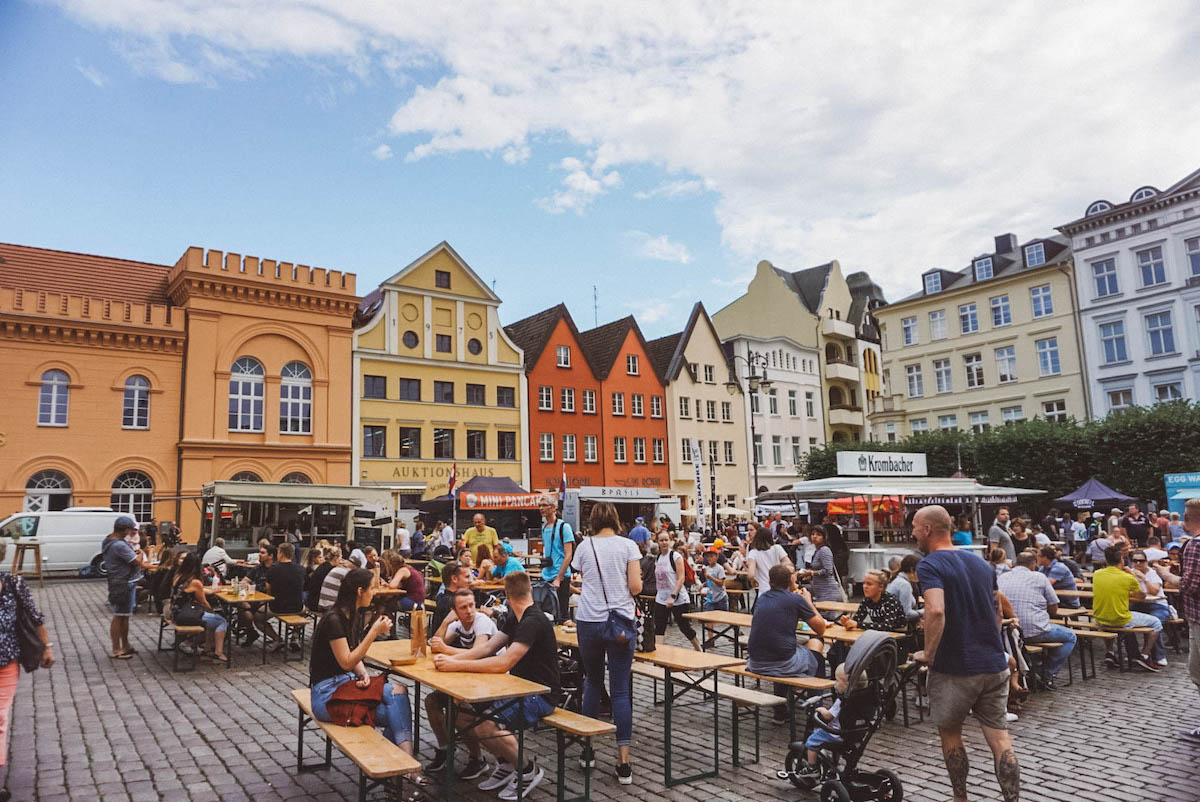
I knew I’d love Schwerin’s Old Town before I even set foot in it. Just look at the picture above — the postcard perfect Old Town is one of the prettiest places to visit in Schwerin.
Like Schwerin itself, the Old Town is big enough that there’s plenty of window shopping to keep you busy for an afternoon, but not so big that you feel the need to zoom around from store to store. What I loved most about the Old Town is that it’s mostly local boutiques and cafes.
There’s a larger shopping center at the edge of the Old Town with chain stores, so if you need to grab Band-Aids from the drugstore or want to stock up on snacks, that’s the place to go.
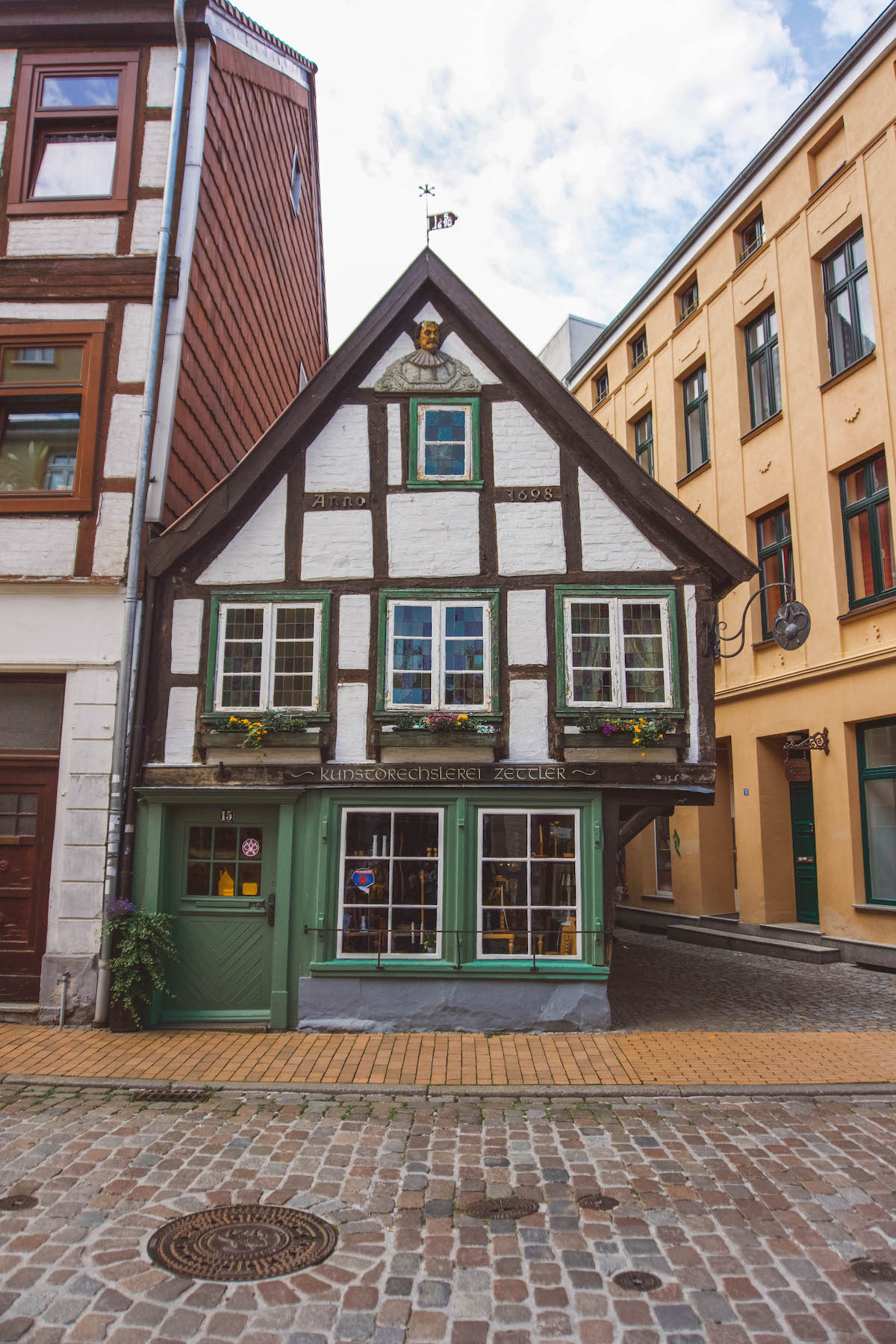
Otherwise, stick to the charming streets of the Altstadt and take in the sights:
- The Gothic brick cathedral
- The quaint half-timbered houses
- The market square, with the lion statue commemorating the 800th anniversary of Henry the Lion’s death
Schwerin Cathedral (Schweriner Dom)
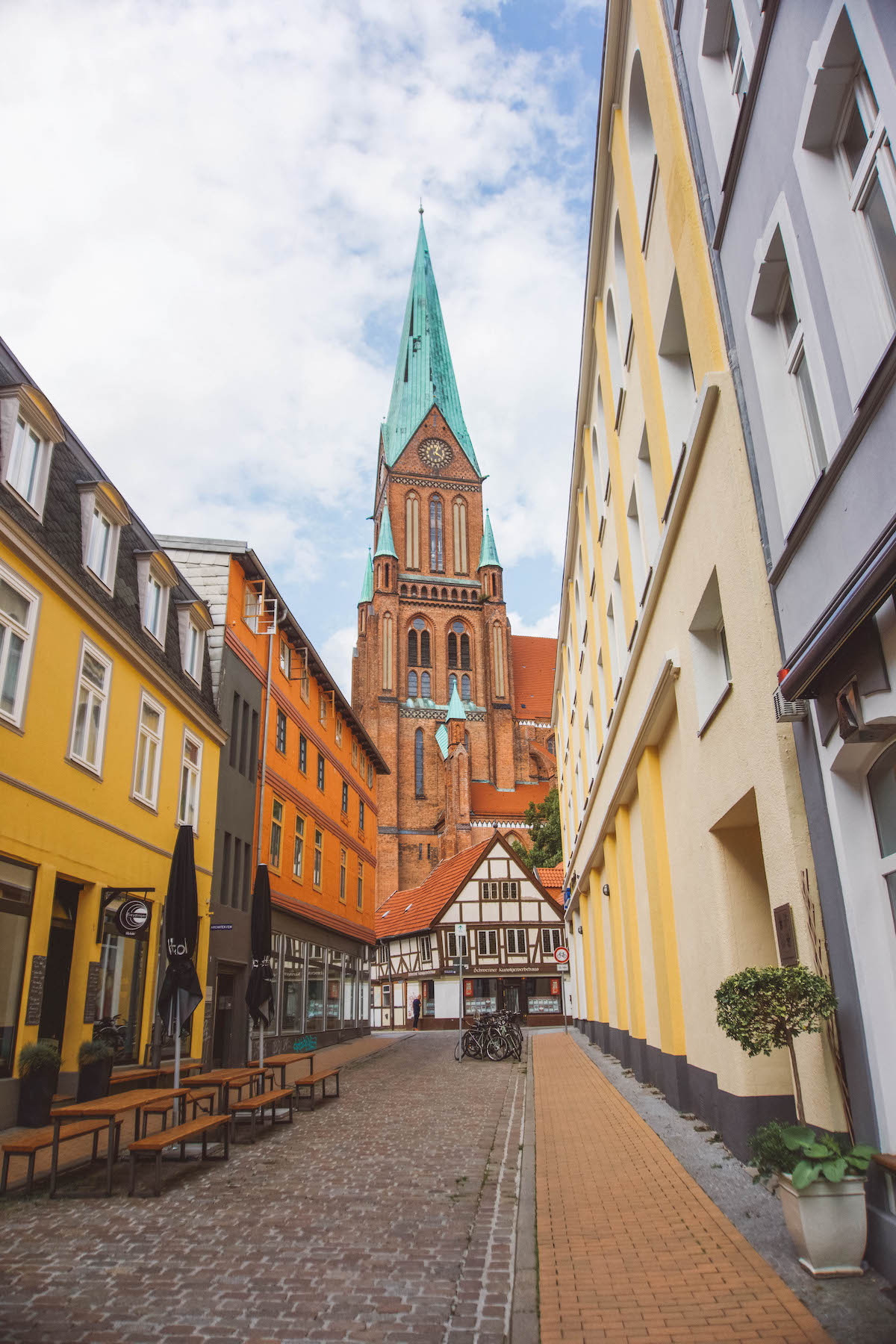
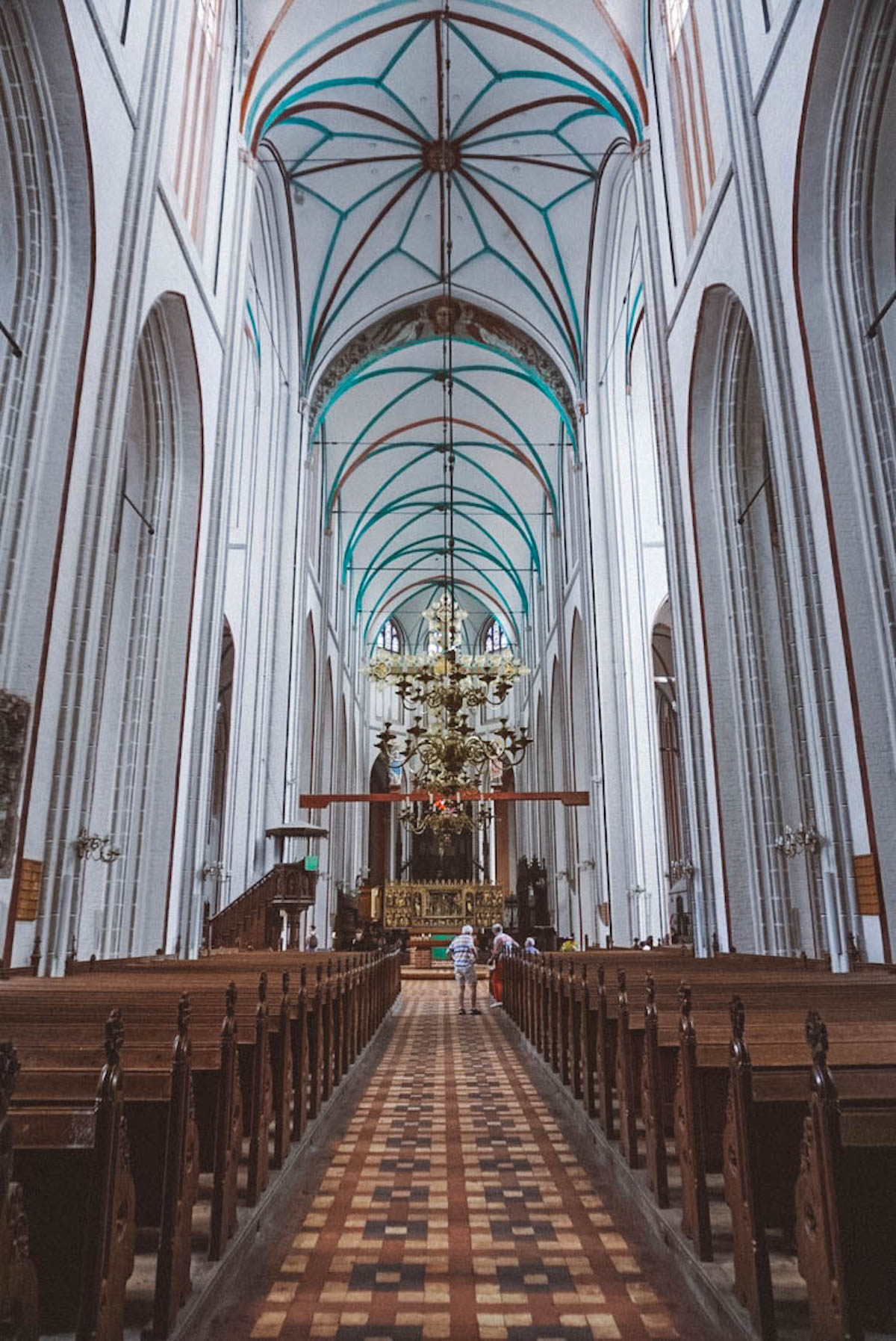
If you’re unsure what to see in Schwerin, don’t miss the impressive cathedral! The Schwerin Cathedral is not only the tallest of all churches in Mecklenburg-Vorpommern at 117.5 meters, it’s also the oldest surviving building in Schwerin’s Old Town.
The cathedral was founded by Henry the Lion, Duke of Bavaria and Saxony, and is built primarily out of bricks. It’s a beautiful example of German brick Gothic architecture, and houses such treasures as a 14th century bronze baptismal font and a massive Ladegast organ from the 19th century.
What struck me during my visit to the cathedral was its understated elegance. The interior is painted white (you see this all over Germany in former Catholic churches that were converted to Lutheranism), and the arches are painted with green and red stripes.
It’s both very plain, yet colorful, and the white walls let the stained glass windows steal the limelight. History buffs will also appreciate the tombs of the grand ducal royal family that are scattered throughout the church.
Pfaffenteich
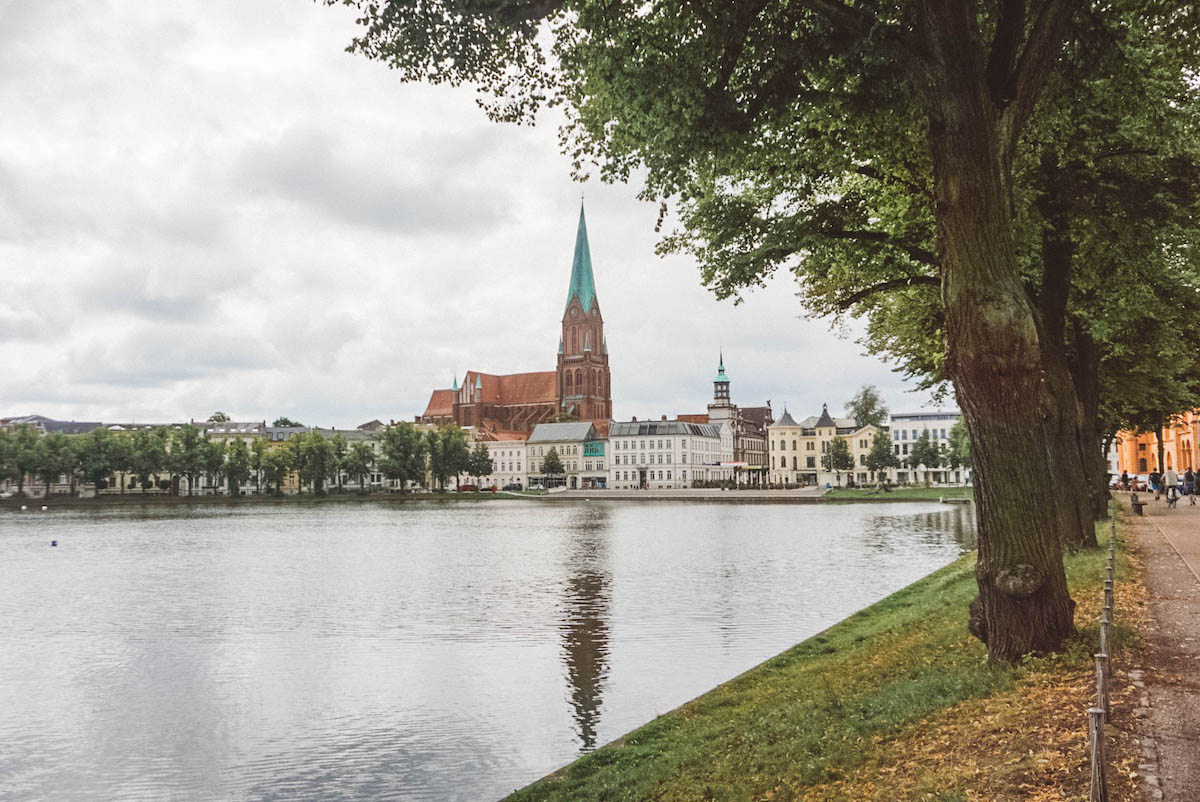
The Pfaffenteich is a 12-hectare large pond that butts up next to the entrance to the Old Town. If you’ve seen the Binnenalster in Hamburg, the Pfaffenteich is a smaller version of that. The pond was originally dammed in the 10th century to power the watermills in the city.
You can walk around the Pfaffenteich or ride a tiny boat to the other side of the pond. The walk around the pond is the perfect way to stretch your legs, and the buildings surrounding it are stunning. Not to mention the view of the Altstadt from the other side of the water is unbeatable.
If the weather is nice, put on your walking shoes and go for a stroll. It’s a quiet area and not many visitors cross to the other side of the pond. A very pretty and peaceful Schwerin attraction!
Staatliches Museum Schwerin (State Museum)
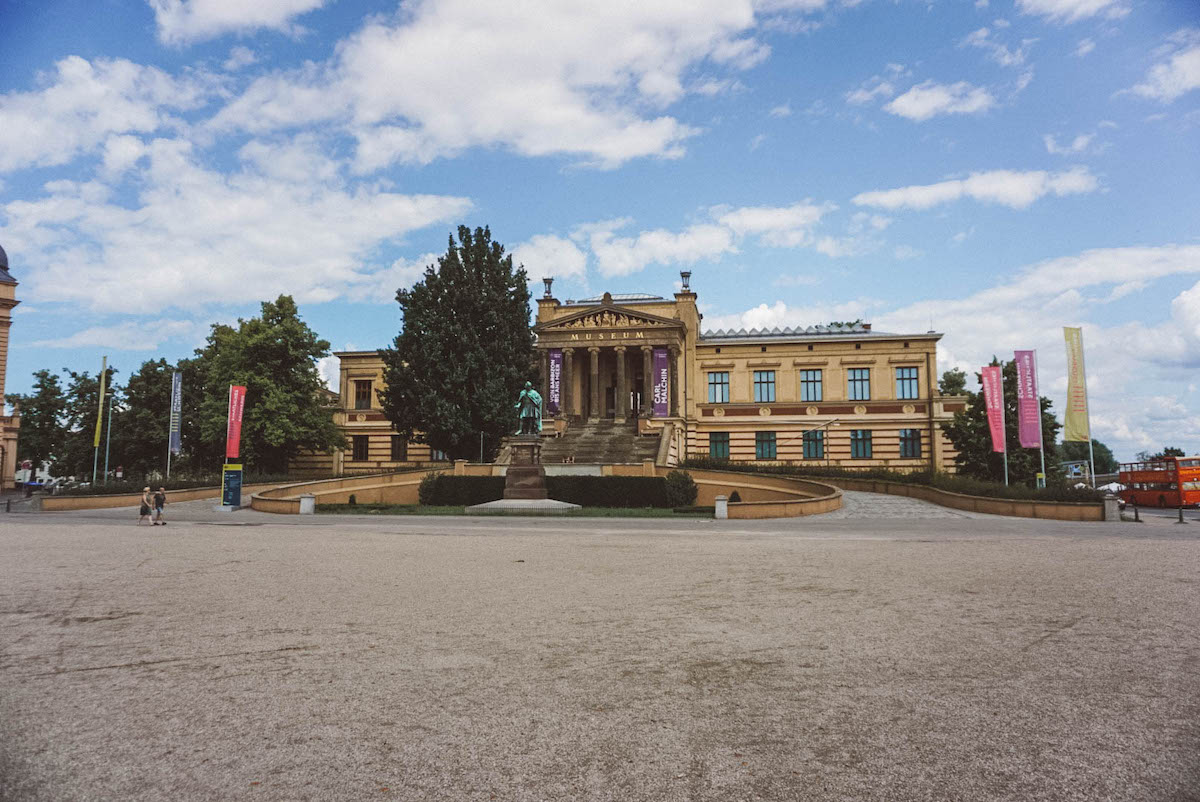
The Schwerin State Museum is an art museum with works stretching back as far as 1,000 years.
The core pieces on display were originally collected by the dukes of Mecklenburg-Vorpommern. Many of these works of art showcase the best-known painters of the Dutch and Flemish Golden Age.
After admiring the more historic items in the museum’s collection, cross over to the new wing of the museum to see the 20th and 21st century art pieces.
Old Mill (Schleifmühle)
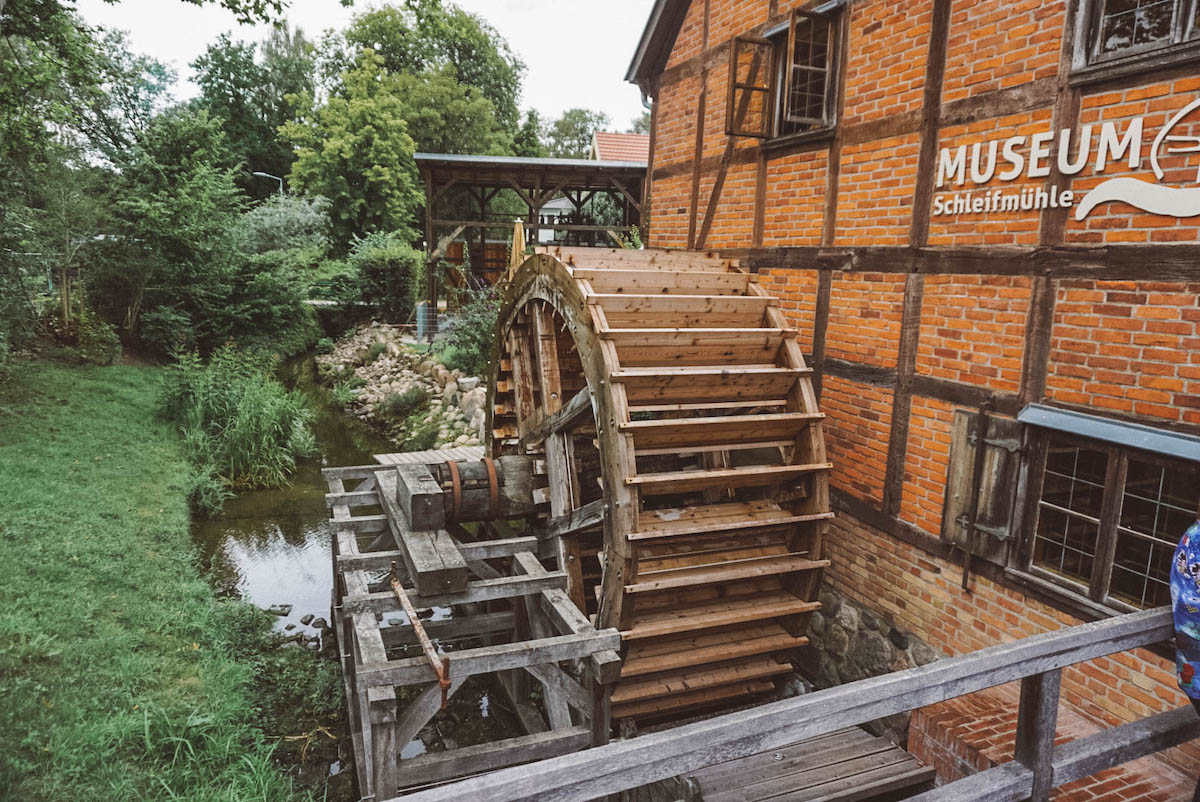
Visitors looking for lesser-known things to do in Schwerin should visit the Schleifmühle. The Schleifmühle is an old water mill that was built in 1704.
For 100 years, it operated as the ducal stone grinding mill to produce fireplace surrounds, monument bases, decorative stone slabs, and so forth.
The mill is now used as a museum space, and visitors can read all about the mill’s purpose and history in a small exhibit upstairs (note that the text is mostly in German). There are also workers onsite who can provide a brief history and demonstration of how the stone mill operates.
I was amazed at how slowly the mill ground down the stone! It definitely gave me a higher appreciation for all of the stonework we saw in the castle.
Where to Eat in Schwerin
Since we were only in town for a weekend, we didn’t get to sample much from the local cafes and restaurants. What we did have time to eat was phenomenal though. You’ll find cute cafés on every street in Schwerin, but a few of our favorites were:
Rösterei Fuchs
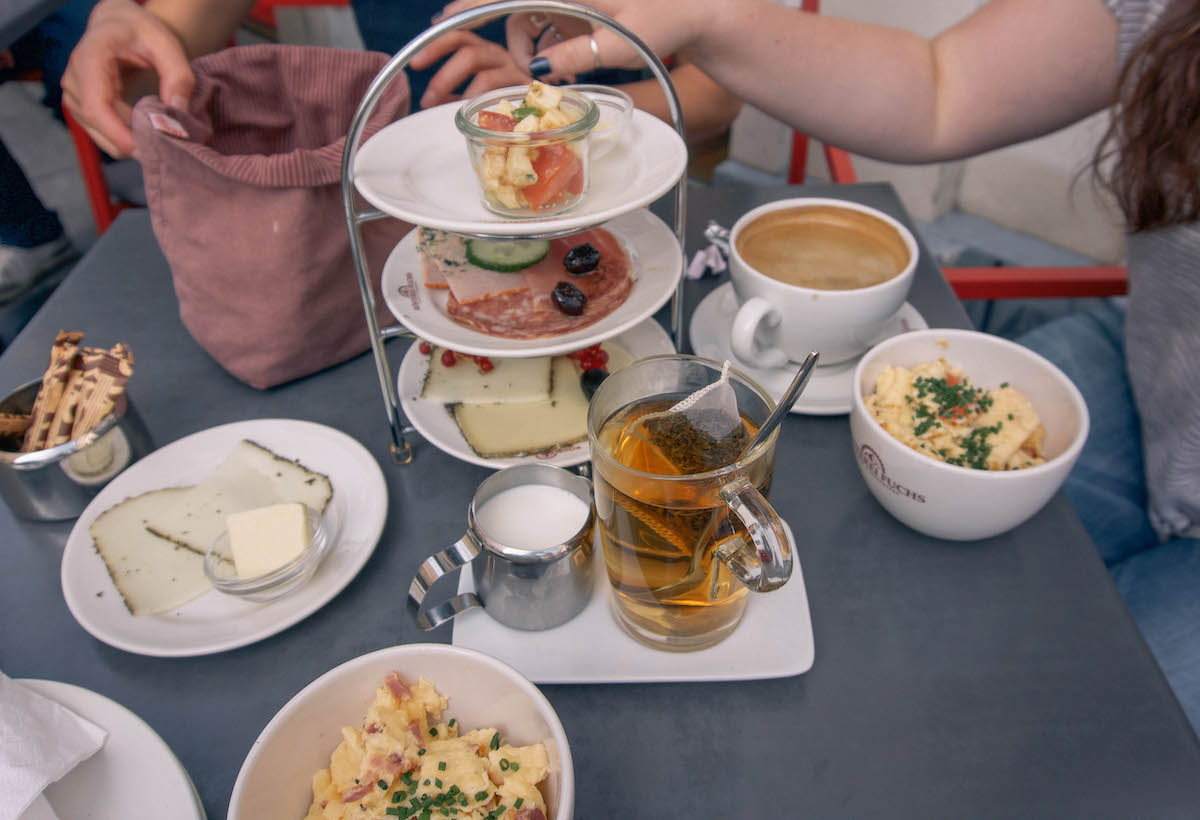
Coffee lovers, this is going to be your new favorite spot. Rösterei Fuchs specializes in coffee and chocolate, but its bistro serves up delicious everyday fare as well.
The breakfast options here are affordable, but good quality and very filling. There’s a lengthy lunch menu as well that we were unable to sample, but if it’s anything like the breakfast spread we ordered I’m sure it won’t disappoint.
KostBar
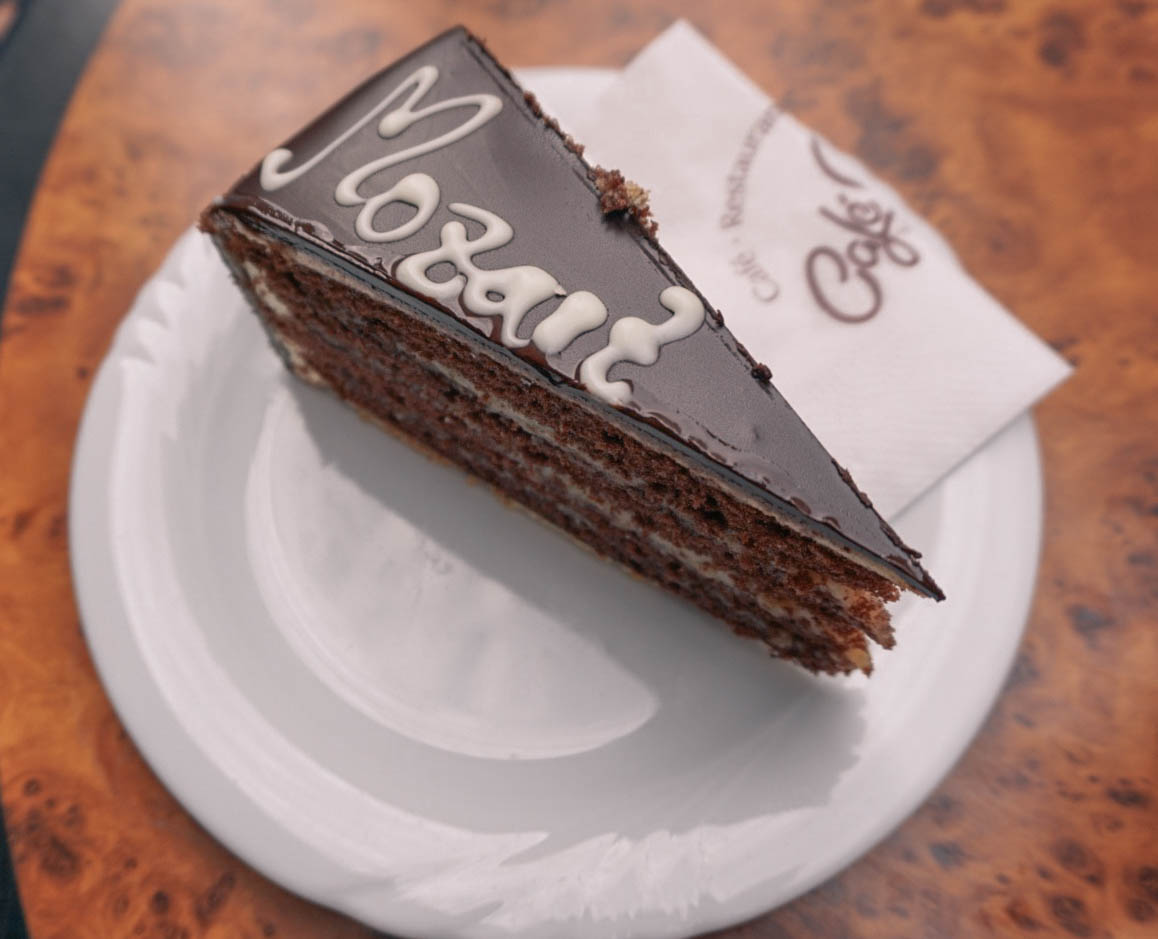
KostBar is a no-frills café with good eats and good prices. We stopped by for drinks and cake on a Saturday afternoon, and we wound up chatting for a good 90 minutes before we finally got back to our feet.
If you’re looking for vegan or gluten-free options in Schwerin, see what KostBar has that day. Their menu is limited, but they’re more accommodating to special diets than many of the other restaurants in the Old Town.
Café Prag
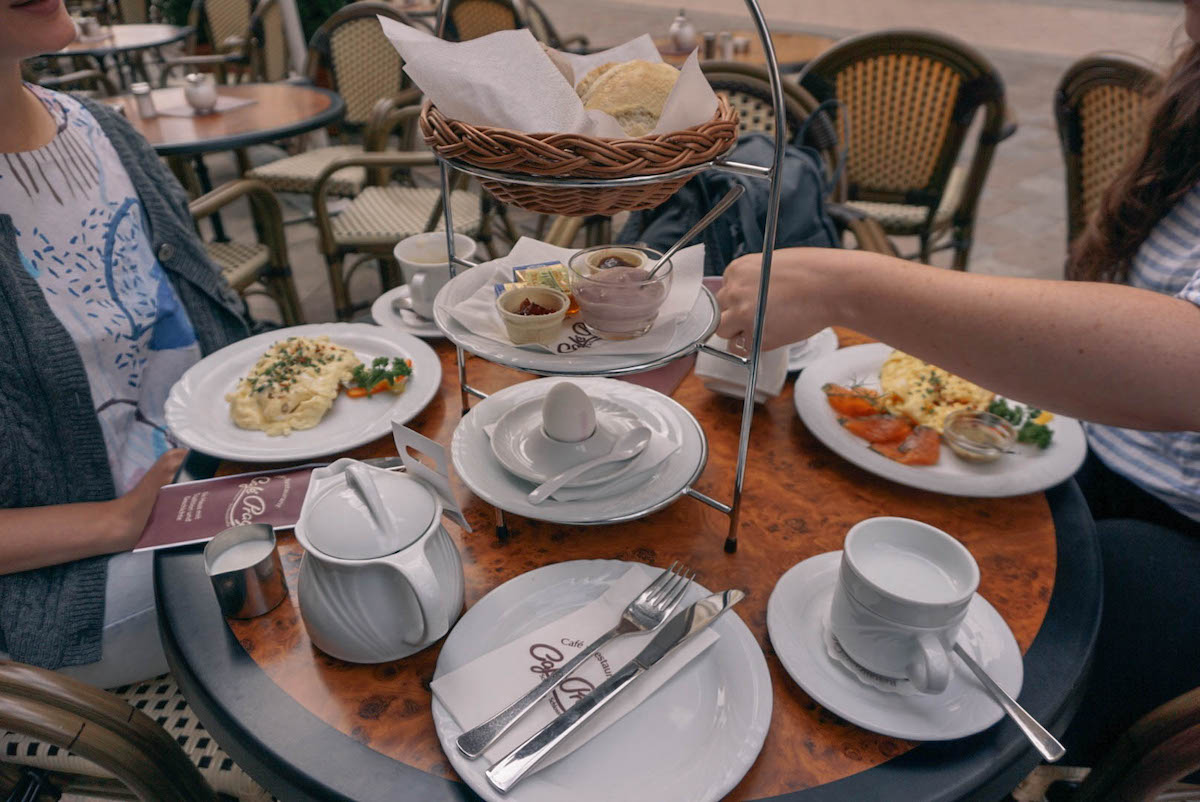
We were initially hesitant to eat at Café Prag since it’s down the street from the castle and seemed like a touristy spot. We needn’t have worried though, because the food here is divine.
On Sunday morning, we breakfasted like queens here. I ordered what I thought would be a simple bread platter with jelly and butter. When our food arrived, I was pleasantly surprised to be given my own tower of food, complete with a pot of yogurt and soft-boiled egg (do Germans know how to breakfast or what?).
My friends opted to chase their breakfasts down with a slice of cake each, and I’m happy to report that the cakes here are as good as they look. If you’re peckish after your visit to the castle, swing by Café Prag for a midday pick-me-up. It’s a touch pricey, but well worth it.
FAQs About Visiting Schwerin
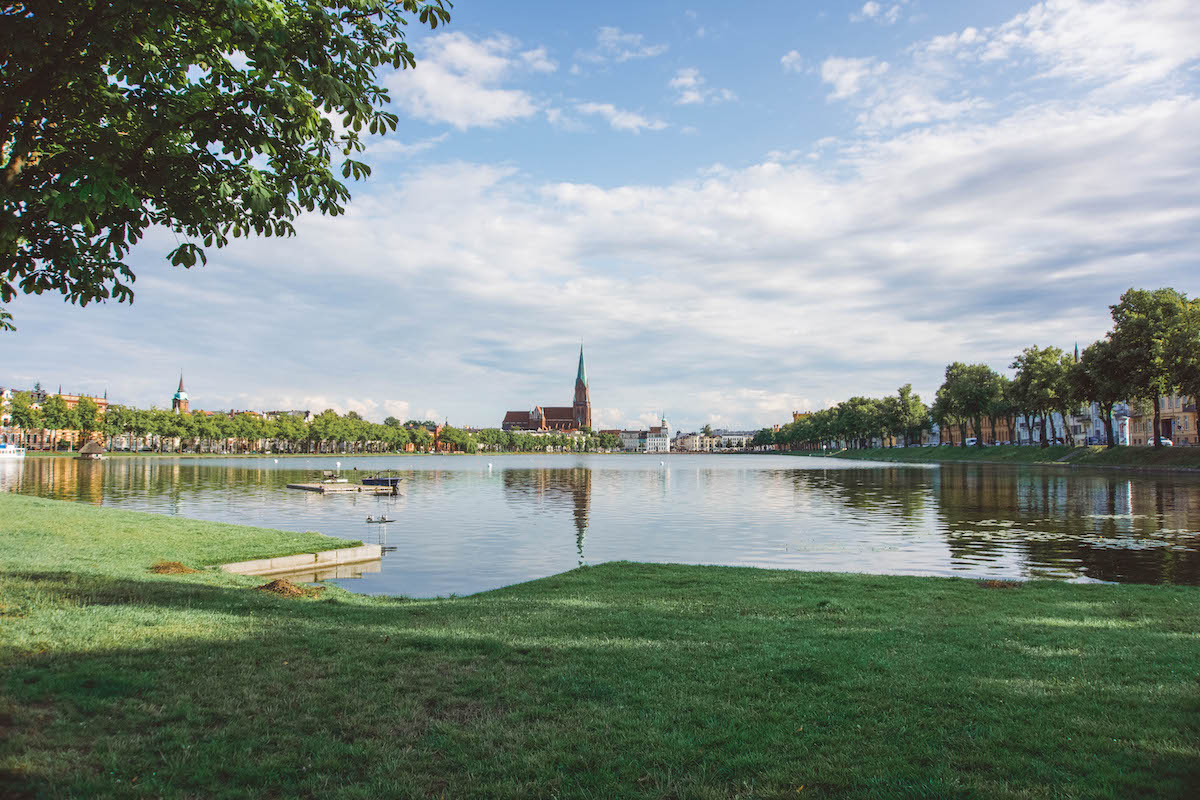
Where is Schwerin, Germany?
Schwerin is the capital of the German state Mecklenburg-Vorpommern, in northern Germany. It is roughly two hours north of Berlin and an hour due east of Hamburg by train.
How many days are needed in Schwerin?
Schwerin is teeny tiny, but so incredibly beautiful. Two full days in this fairytale city should be enough time to see everything you want to. Between the bustling market square, the many shops, the stunning castle, and the vast gardens, Schwerin ticks all the boxes without feeling too big to conquer in a single weekend.
What’s the best place to stay in Schwerin?
I won’t mention the hotel we stayed in Schwerin because it wasn’t the nicest. However, I will say that staying somewhere near the Altstadt is a good idea. Before booking your lodgings, check to see if there are any local events happening during your stay as that will hike up the prices significantly.
What’s the best way to get around Schwerin?
You can easily walk everywhere in Schwerin, and the Altstadt is a mere 10 minutes from the train station.
Enjoy Your Time in Fairytale Schwerin!
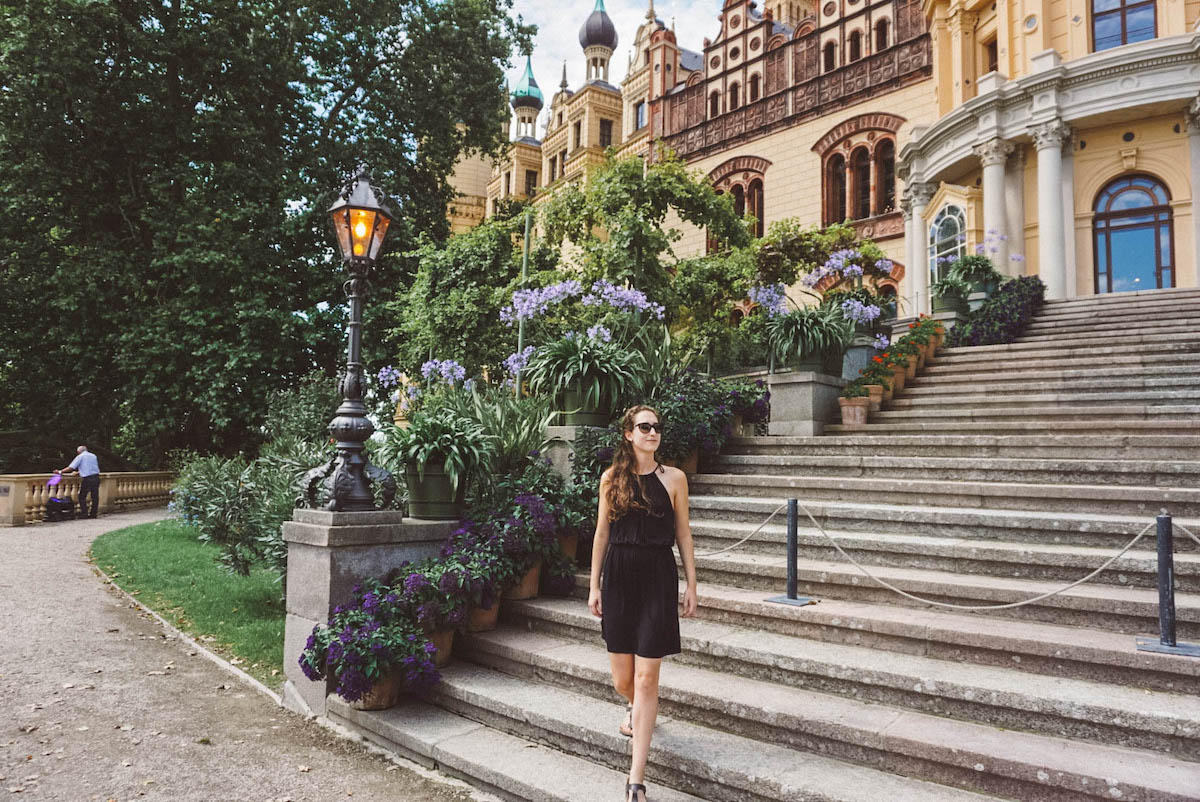
Now that you know what to do in Schwerin, it’s time to book those train tickets and start exploring! The fairytale castle alone makes Schwerin worth visiting, but the city’s many other attractions are what make it the perfect weekend destination.
As always, feel free to leave me a message below if you have any questions or comments about this list of things to do in Schwerin.
Don’t forget to follow me on Instagram to keep up with my daily adventures in Berlin and beyond!

Leave A Reply!